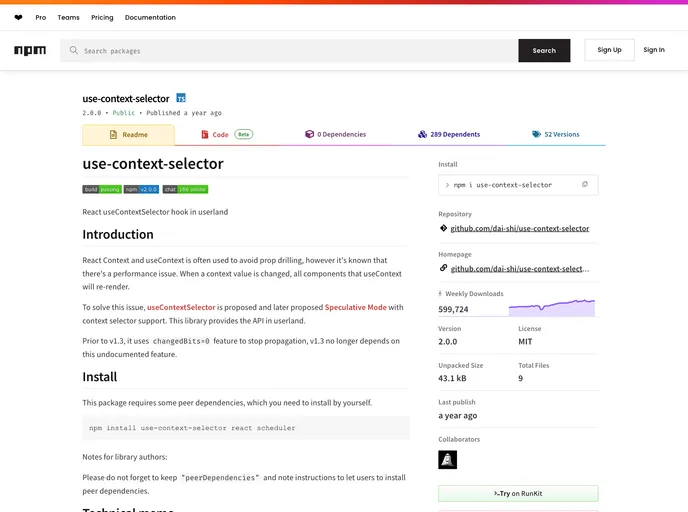Overview
The useContextSelector library is a powerful tool that enhances the React Context API by addressing the common performance issues associated with re-rendering components when context values change. Traditionally, using useContext means that any change in context triggers a re-render of all consuming components, which can lead to unintended performance hits. With useContextSelector, developers can select specific values from the context that they care about, ensuring that only relevant components re-render when there’s a change.
This library introduces an elegant API that is easy to work with, providing functionality to create context selectors that help streamline the performance of React applications. Whether you’re building a complex application or just want to optimize the way your components share data, useContextSelector is worth considering.
Features
createContext: This method allows you to create a special context specifically for
useContextSelector, ensuring compatibility and optimized performance.useContextSelector: This hook lets you retrieve a value from the context based on a selector function, triggering re-renders only when the selected value changes referentially.
useContext: A slightly modified version of React’s built-in
useContext, it returns the entire context value while maintaining consistent behavior across your application.useContextUpdate: This hook provides an update function tailored for concurrent rendering in React 18, making state changes safer and more efficient.
BridgeProvider: A versatile Provider component that facilitates the connection between multiple React roots, which is especially useful in complex applications.
useBridgeValue: This hook returns a value specifically for
BridgeProvider, allowing for seamless data flow across different components and contexts.Performance Optimization: Ensures that components only re-render when context values are changed, reducing unnecessary renders and enhancing application performance.
Limitations Handling: Available features consider the nuances of React’s rendering behavior, with options to work around existing limitations like stale props and re-render triggers.




